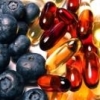I'm going to start growing again but to make the consumption more palatable I'm going to start experimenting with mixing in other foods/spices. Is there anything you should avoid mixing in with Broccoli sprouts that might ruin the benefits?
Good question! I'm not sure, but maybe avoid ingesting H2O2 with it? http://www.jbc.org/c.../3/555.full.pdf I don't think that's a real risk though, if you do take a page out of a mycology book and use H2O2 to kill pathogenic bacteria, just wash it off first and then crush/chew/ingest.
On another note, my wife put the kabosh on the broccoli sprouts after I stunk up my office with a mix of that and a significant amount of brown mustard seed powder for 12 hours. She just couldn't handle the smell anymore so I ordered Avmacol chewables and put away my poor little sprouts seeds.































 This topic is locked
This topic is locked





















